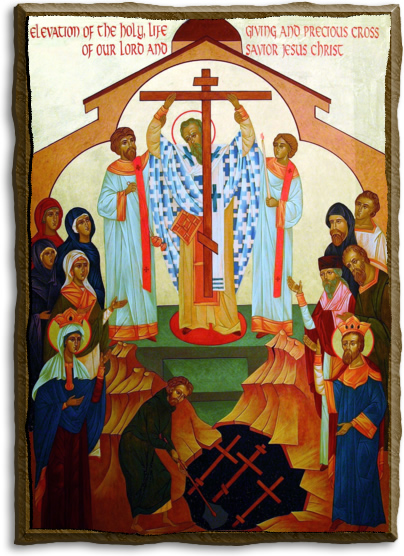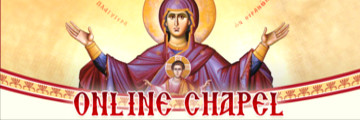The Elevation of the Holy Cross is one of the Great Feasts of the Orthodox Church, celebrated on September 14. This feast is also referred to as the Exaltation of the Cross. This is also a popular name day for Stavroula/Stavros (from “stavros” meaning cross).
This feast commemorates two events:
(1) The finding of the Cross by the Empress Helen (the mother of St. Constantine the Great) on Golgotha in 326 AD, the place where Christ was crucified.
On the spot where the Cross was discovered, St. Helen had found a hitherto unknown flower of rare beauty and fragrance, which has been named “Vasiliko,” or Basil, meaning the flower of royalty. Note that the word “Vasiliko” means “of the King,” since the word “Basileus” in Greek means “King”; so, the plant Vasiliko, Basil, is tied to the Precious Cross of the King of Glory, our Lord Jesus Christ.
Underneath the Basil, the Cross of Christ was found, but with it were the other two crosses, those used to crucify the two thieves on either side of Christ. The sign with the inscription, “Jesus of Nazareth, the King of the Jews”, also lay among the three crosses. In order to determine which one was the true cross, a sick woman was told to kiss each of the three crosses. The woman kissed the first cross with no result. She kissed the second cross and again nothing happened. However, when the ailing woman kissed the True Cross, she was immediately made well. It so happened that a funeral procession was passing that way, and so the body of the dead man was placed on each of the crosses, and when it was placed on the True Cross, the dead man came to life — thus the name the “Life-Giving” Cross, which gives life not only to that man, but to each person who believes in the sacrifice of Christ on the Cross and His all-glorious three day Resurrection.
When the true Cross was identified, it was lifted on high for all the people to see, who then continually sang Kyrie eleison, a practice which is still enacted at current celebrations of this feast.
(2) The recovery of the Cross on which Jesus Christ was crucified from the Persians. The Persians had captured the True Cross as a prize of war when they sacked Jerusalem in 614 AD. It was recovered by the forces of the Byzantine Empire (Eastern Roman Empire)) in 627 AD, when Emperor Heraclius decisively defeated the Sassanid Persians at The Battle of Nineveh, surrounding their capital Ctesiphon, recovering the True Cross, and breaking the power of the Sassanid dynasty. The Elevation took place on March 21, 630 AD, when Emperor Heraclius entered Jerusalem amidst great rejoicing, and together with Patriarch Zacharios (609-632), transferred the Cross of Christ with great solemnity into the temple of the Resurrection, joyously held up for veneration by the Christian faithful.
This is one of the two feast days which is held as a strict fast. The other is the commemoration of the Beheading of St. John the Forerunner on August 29.
(from OrthodoxWiki.org)




